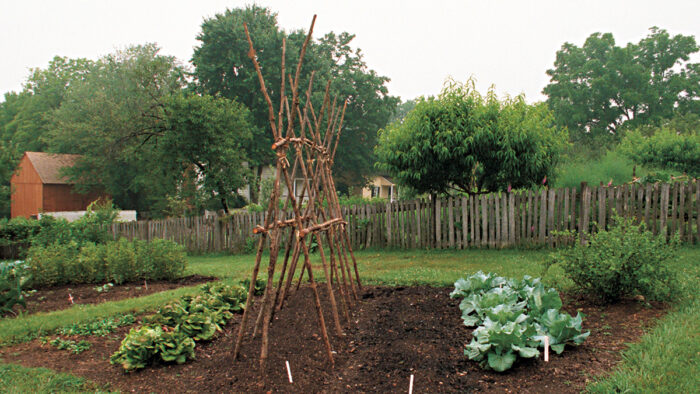
The gardeners who tend the quiet plots in Old Salem, a historic Moravian village in Winston-Salem, North Carolina, try to stay true to tradition. But the exact specifications of many of those traditions aren’t laid out in a manual. Just as the hardy pioneers who made this community more than 200 years ago adapted to their age and circumstances, so too have its modern tenders. And the tomato supports and bean tepees used in the gardens are good examples of the accommodation.
While the gardeners haven’t traced the design and materials to the original gardens, the spare appearance and practicality of the structures suggest they would be comfortable there.
These structures can be adapted for use in the home garden using saplings, twine, and 1x1s from the garden center. For hoops, you might try using woody vines, which are flexible when green.
Hoop cages and angled rails keep tomatoes corralled

The inspiration for the tomato support came not from the Moravians but from the jacket of a book by New England plantsman Fearing Burr, Jr. The book, Field and Garden Vegetables of America, was originally published in 1863 and republished in 1988 by The American Botanist, Booksellers. Captioned “Hoop-training of the tomato,” the drawing shows three hoops staggered and supported on three stakes. Bill Crow of Old Salem village says the drawing was adapted to fit the plots he tends.
The hoops come from wood used by the village’s basket makers, who split white oak into long flexible pieces that follow the grain of the wood. Those pieces, about ½ inch wide and ¼ inch thick, are formed into a circle and lashed with twine. The diameter of the hoops ranges from about 12 inches on the bottom level to about 18 inches on the top.
Sticks used to hang tobacco leaves in barns now serve as the stakes supporting the hoops. Winston-Salem was for a long time a bustling intersection on North Carolina’s tobacco road, and Crow said the sticks are plentiful. They are about an inch square and about 4½ feet long.
The specifications may need to be enlarged. “We’re still experimenting with size,” says Crow. “Sometimes the tomatoes get so large they bend the hoops or sort of pull the whole thing down. I think next time we’ll beef them up,” he says, noting the gardeners are now trying old fence pickets to support the hoops. These uprights are about ¾ inch by 2 inches.
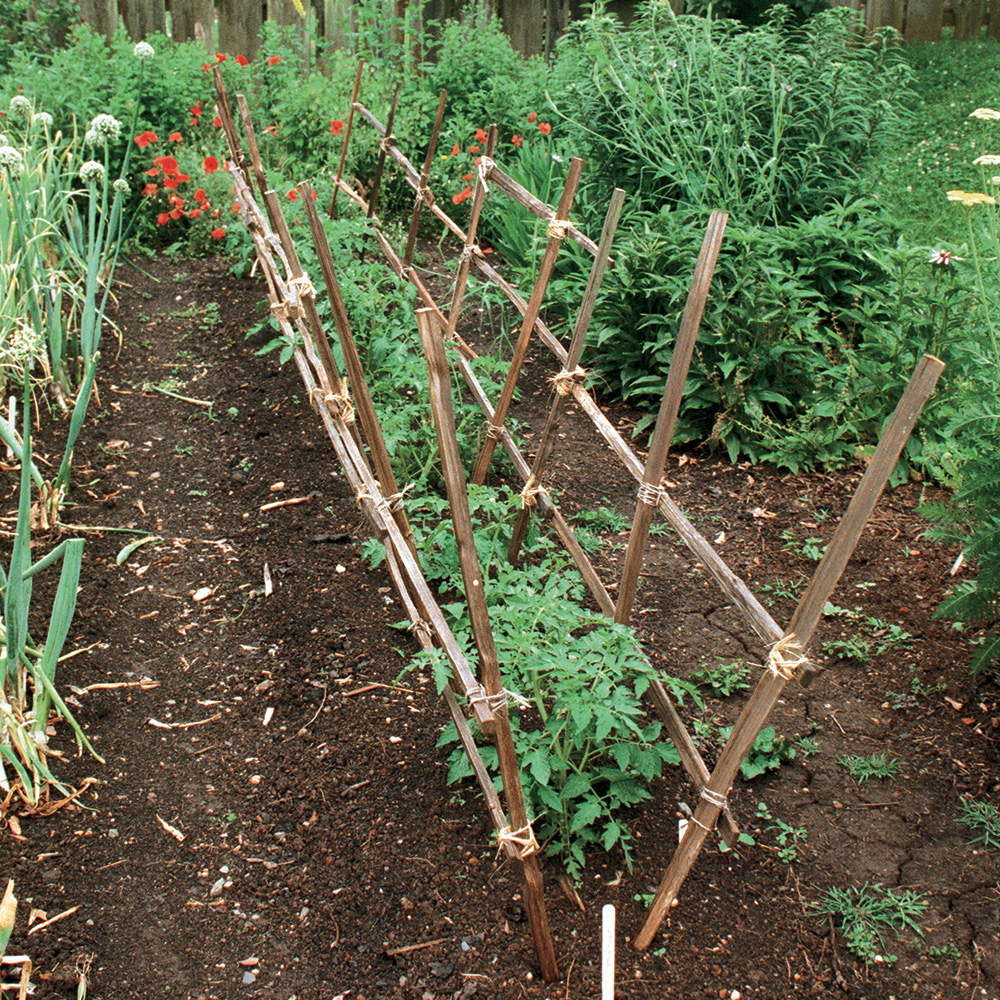
The idea for the angled rails came from an Old Salem worker who had seen something similar in a museum. It’s a straightforward concept. The tobacco sticks are lashed together to form the rails and then inserted at an angle into the ground, usually right after the tomato seedlings are transplanted. “Some tomato plants will put out a lot of growth and you can’t get it restrained,” Crow says. “But it’s worked pretty decently.”
Elongated sapling trellis supports pole beans
It takes some balancing and good lashing technique (see Learn Lashing and Make Your Own Garden Trellises) to erect the bean tepee used at Old Salem. But the only materials you need are pine saplings and twine. And the ‘Blue Coco’ beans look fine dangling from the poles, which are about 10 feet long.
The gardeners first put up and lash the tripods at the two ends, then they place the pairs of crisscrossed poles between the tripods. The top horizontal pole is balanced on the two end tripods and then lashed. Finally, the horizontal poles midway up the frame are lashed on.
The structures are broken down and stored every winter so they won’t rot. The poles last about five years.
More trellises and structures you can build
John Bray was an associate editor at Kitchen Gardener.
All photos: John Bray
From Kitchen Gardener Issue #24, December 1999
Fine Gardening Recommended Products
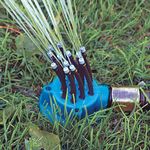
D&X Garden Sprinkler
Fine Gardening receives a commission for items purchased through links on this site, including Amazon Associates and other affiliate advertising programs.
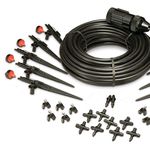
Rain Bird PATIOKIT Drip Irrigation Patio Watering Kit
Fine Gardening receives a commission for items purchased through links on this site, including Amazon Associates and other affiliate advertising programs.

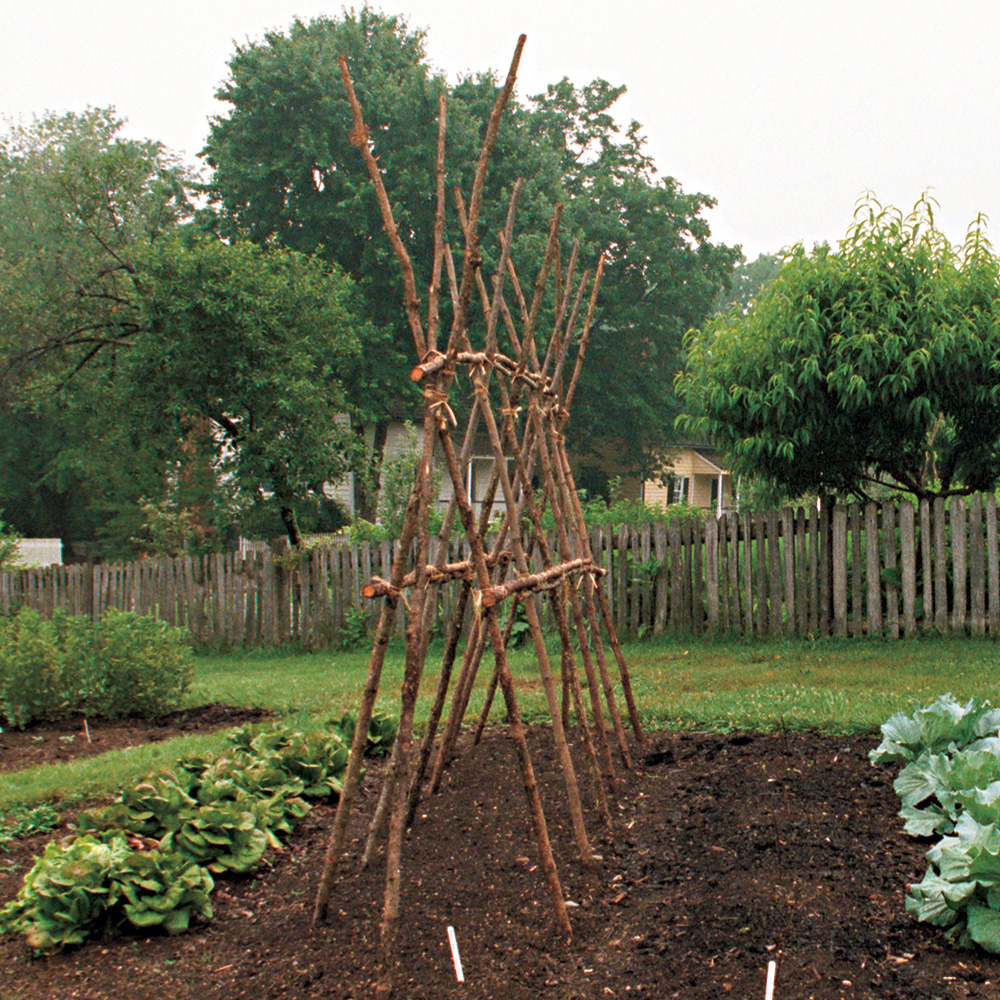




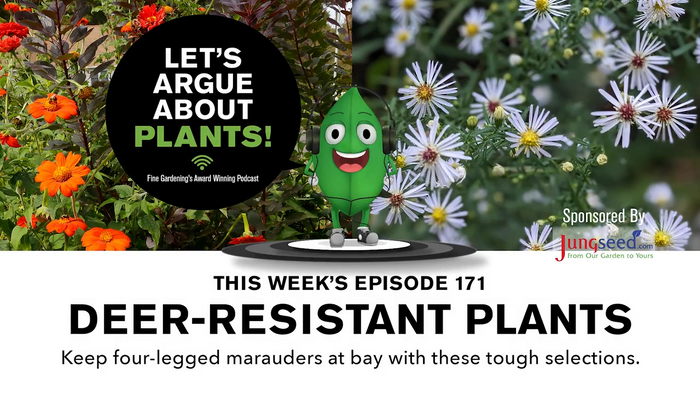












Comments
Log in or create an account to post a comment.
Sign up Log in